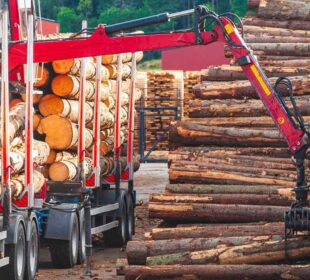The wood demand in Japan reached 25,092,000 m2 in 2015. This represents a 1.9% decrease compared to 2014, according to the Japanese Ministry of Agriculture, Forestry and Fisheries.
As ITTO reported, this is a two consecutive years’ decline, even if the new housing starts were 1.9% in 2015 than in 2014. Also, the imported wood products from foreign countries decreased.
Yet, the domestic wood demand keeps on growing in the domestic consumption of materials. In 2015, it reached a total material supply of 20,049,000 m2, which is 0.7% more than in 2014. Meanwhile, the imported materials were 5,045,000 m2, 11.0% less compared to 2014.
The share of domestic wood was 79.9%, 2.1% more than in 2014. The log demand for lumber decreased by 2.9% in 2015, reaching 16,182,000 m2. Out of this, the domestic logs were 12,004,000, 1.7% less than the previous year.
The decline of imported logs was larger than this, as it only reached 4,178,000 m2 in 2015, going down 6.1% compared to 2014.
Japanese exports of lumber went down by 3.8%, reaching 923,000 m2 in 2015. Imported lumber also declined. Thus, the softwood lumber imported from North America decreased by 0.6%, compared to the previous year and the European softwood lumber went down by 4.6%. Also, the structural laminated lumber was down by 3.1% in 2015, compared to 2014, according to ITTO reports.
Moreover, the log imports from North America decreased by 3.2%, reaching 3.259,000 m2. Yet, the demand for North American logs decreased. The log supply was low due to the forest fires, labor dispute at the West Coast ports and the strong dollar.
The logs for plywood manufacturing reached 4,218,000 m2, 4.2% less than in 2014. Out of this, the domestic logs were 3,356,000 m2, 5.2% up compared to the previous year, while the imported logs reached 864,000 m2, 28.8% less than 2014. Thus, the domestic logs’ share was 80%.
As ITTO reported, the standard plywood production was 2,756,000 m2, 2.0% less than the previous year and the imported plywood was down by 17%.
















